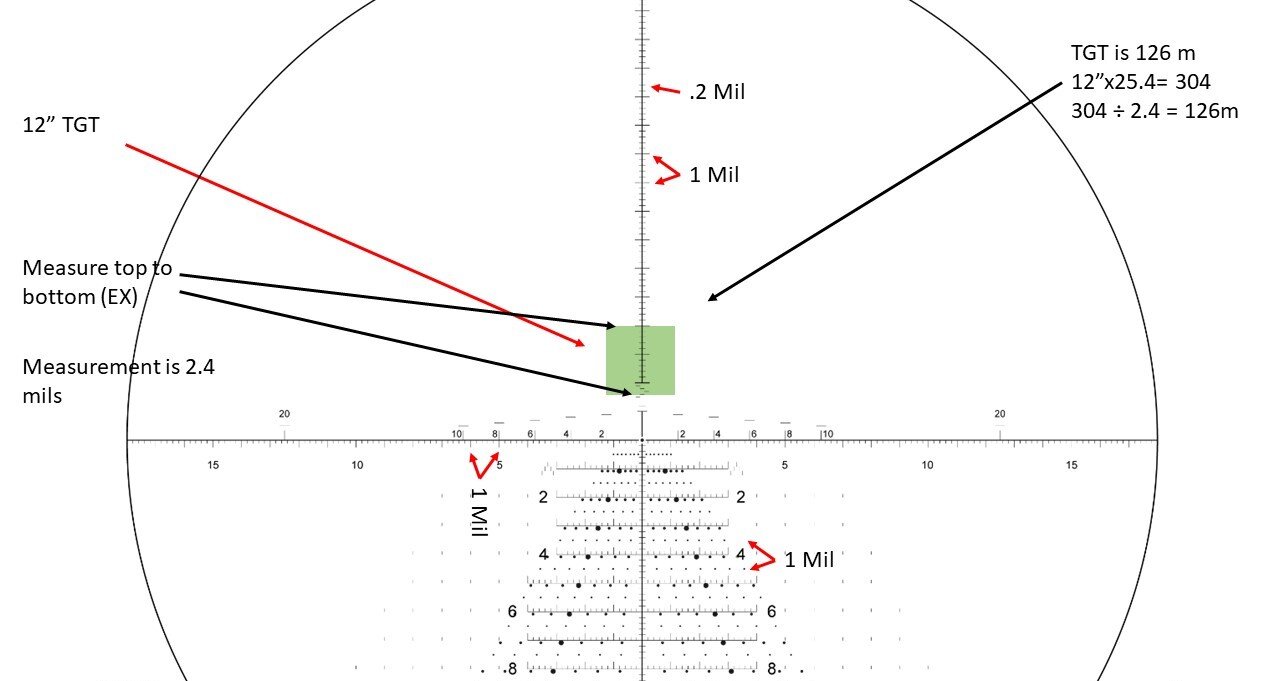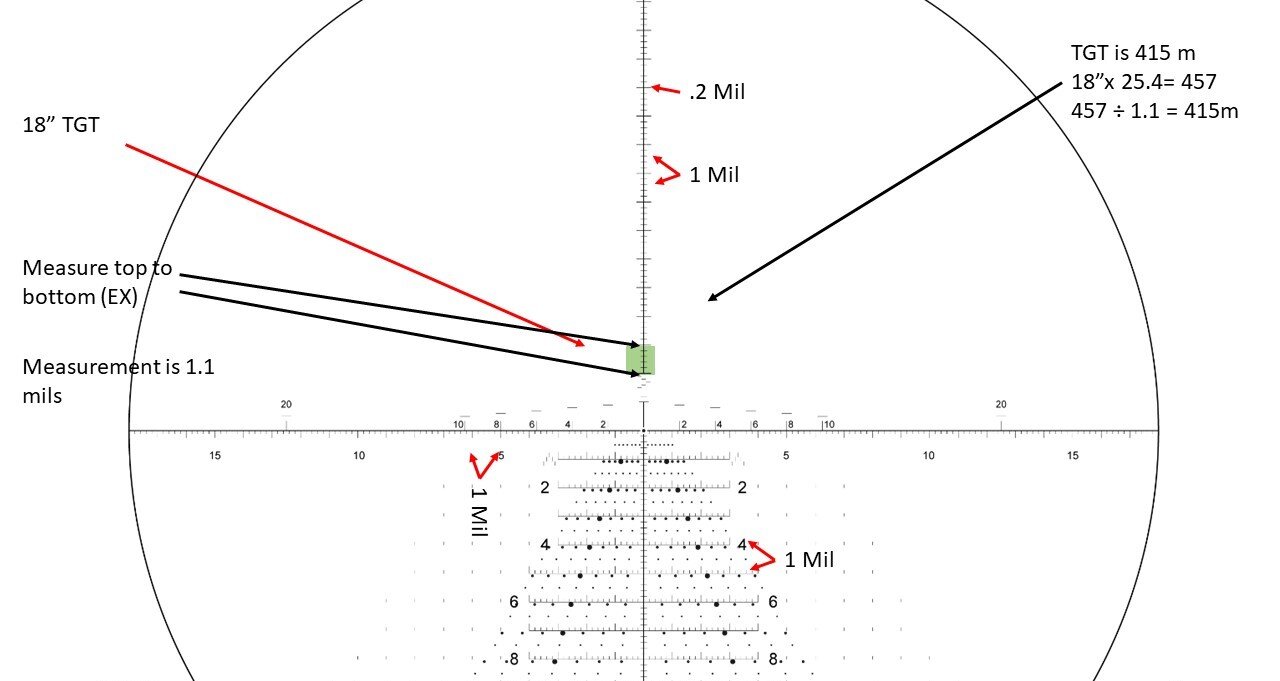The milgrid reticle thread made me think of this. How many know how to actually mil a target and estimate the range?
Here's a ranging formula for meters
R= Size of Target in Meters X 1000
-------------------------------------------------
Size of object in mils
Convert inches to meters by multiplying the inches by .0254
OR
R= Size of Target in Meters X 1000 ÷ Size of object in mils
Convert inches to meters by multiplying the inches by .0254
Example Problem:
Target size: 6.5 meters
Target in Mils: 5
6.5 X 1000 = 6500
6500 divided by 5 = 1300 meters
OR
Target size: 24 inches
Target in Mils: 3.5
24 x .0254 = .609
.609 X 1000 = 609
609 divided by 3.5 = 174 meters
OR
Target size: 1 meter
Target in Mils: 5
1 X 1000 = 1000
1000 divided by 5 = 200 meters
Once the formula is understood, you just need to know the size of things.
We'll do inches next post.
Here's a ranging formula for meters
R= Size of Target in Meters X 1000
-------------------------------------------------
Size of object in mils
Convert inches to meters by multiplying the inches by .0254
OR
R= Size of Target in Meters X 1000 ÷ Size of object in mils
Convert inches to meters by multiplying the inches by .0254
Example Problem:
Target size: 6.5 meters
Target in Mils: 5
6.5 X 1000 = 6500
6500 divided by 5 = 1300 meters
OR
Target size: 24 inches
Target in Mils: 3.5
24 x .0254 = .609
.609 X 1000 = 609
609 divided by 3.5 = 174 meters
OR
Target size: 1 meter
Target in Mils: 5
1 X 1000 = 1000
1000 divided by 5 = 200 meters
Once the formula is understood, you just need to know the size of things.
We'll do inches next post.
Last edited:


